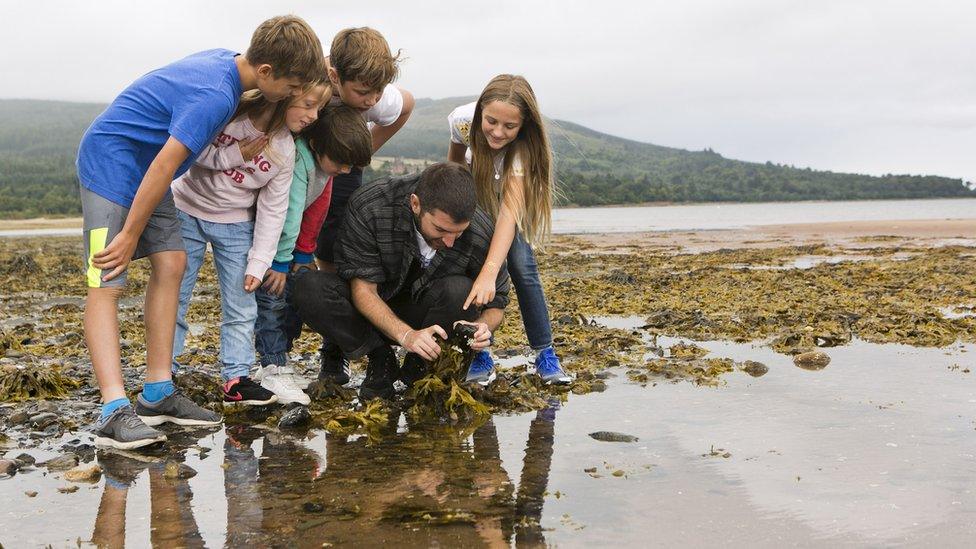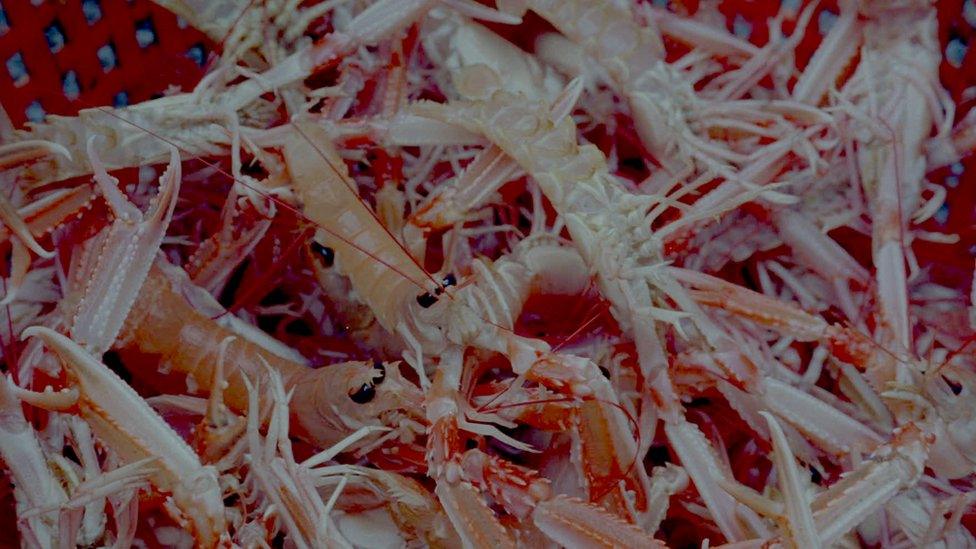Films explore two Scottish marine protected areas
- Published

Ed Webb-Ingall made his film on Arran
Two new films are exploring coastal and island communities' responses to Marine Protected Areas (MPAs).
Margaret Salmon and Ed Webb-Ingall shot their films in Wester Ross and the Isle of Arran where large areas of the sea and seabed have the designations.
The aim of MPAs is to improve marine conservation.
Artists Salmon and Webb-Ingall's films look at life in and around the protected areas two years after their introduction.
Salmon made her film Chladach in Wester Ross, while Webb-Ingall's shot scenes for I Walk There Every Day, But Never Saw It That Way on Arran.

Langoustine in a still from Margaret Salmon's film Chladach
Artists Salmon and Webb-Ingall's films look at life in and around the protected areas two years after their introduction.
Salmon made her film Chladach in Wester Ross, while Webb-Ingall's shot scenes for I Walk There Every Day, But Never Saw It That Way on Arran.
They worked with scientists from the Scottish Association for Marine Science in Oban and Arran conservation group, Coast.
Under the title The Shore: How We See The Sea, external, the films are being taken on a tour of venues across Scotland.

Chladach was filmed in Wester Ross
Alice Sharp, director and curator of Invisible Dust, an organisation involved in the project, said: "The exploration of the responses of the local communities to the Scottish Marine Protected Areas highlighted by the two Shore filmmakers Margaret Salmon and Ed Webb-Ingall are passionate, contradictory and fascinating.
"The artists' collaboration with the marine scientists has led to wonderful ethereal underwater footage of these threatened marine environments by Margaret Salmon and the posing of vital questions such as 'who owns the sea' and 'how do we protect the sea' by Ed Webb-Ingall."